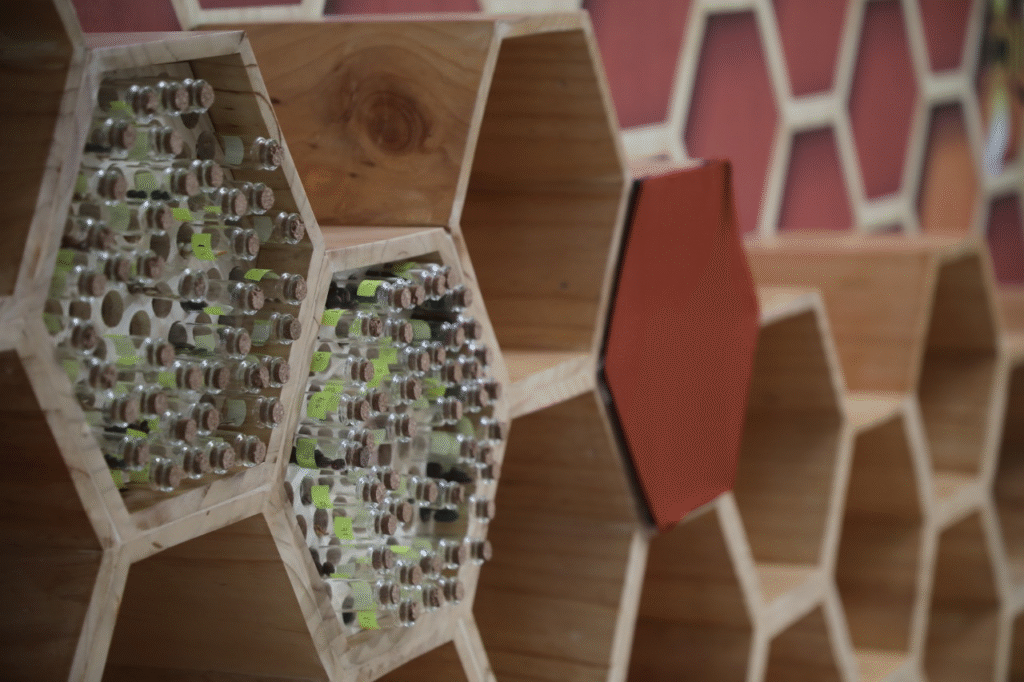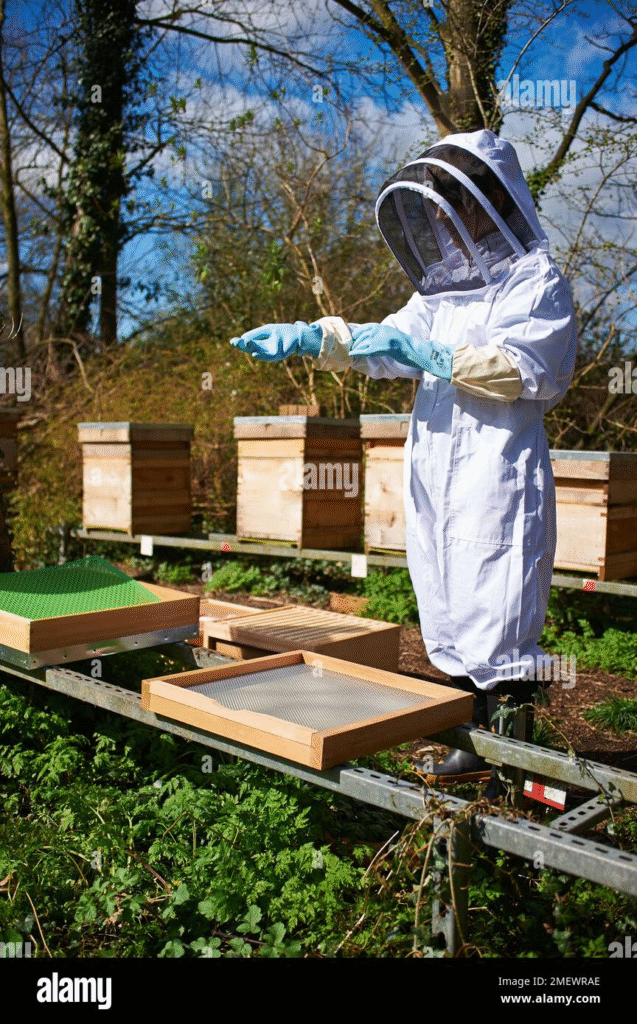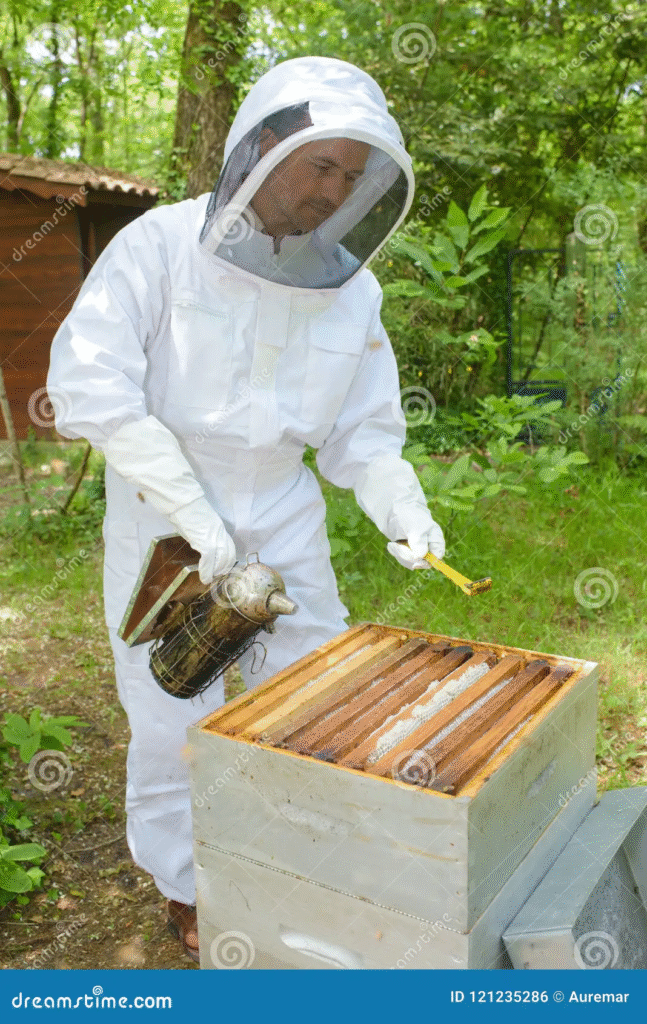Learn how to build eco-friendly beehives using sustainable materials and green design practices. Discover hive types, natural finishes, and tips for chemical-free, bee-safe construction.
Overview

As the urgency to protect pollinators intensifies, innovative approaches to eco-friendly hive construction are transforming traditional beekeeping into a modern, sustainable practice. Beyond using natural materials, today’s eco-conscious hive designs integrate cutting-edge technology, biomimicry, and circular economy principles to create self-sustaining, resilient habitats that support thriving bee colonies and promote environmental harmony.
Rethinking Hive Construction: Innovation Meets Sustainability
Eco-friendly hive construction is evolving from simply using sustainable materials to engineering hives that dynamically interact with their environment. The goal is to replicate and enhance natural bee habitats while minimizing human impact. This new wave of innovation combines ecological science, smart technology, and creative design to build hives that are not only green but also intelligent.
Innovative Materials: Beyond Wood and Bamboo
- Mycelium Composites: Fungal mycelium, grown around agricultural waste, forms a lightweight, biodegradable, and naturally insulating hive structure. It is fire-resistant, pest-repellent, and decomposes harmlessly at the end of its life cycle.
- Recycled Ocean Plastics: Upcycled marine plastics cleaned and processed into durable hive components reduce ocean pollution while providing weather-resistant materials.
- Bio-Based Polymers: Derived from renewable resources such as cornstarch or algae, these polymers offer biodegradable alternatives to traditional plastics with high durability.
- Thermochromic Paints: Natural or eco-certified paints that change color with temperature can help visually monitor hive conditions and contribute to passive temperature regulation.
Biomimicry and Hive Design Innovation

- Honeycomb-Inspired Structures: Advanced 3D printing and CNC milling allow construction of hive components that mimic the geometry of natural honeycombs for optimized space, strength, and airflow.
- Modular Ecosystems: Hives designed as interconnected modules encourage better airflow and allow parts to be swapped or upgraded, extending hive lifespan and reducing waste.
- Smart Ventilation Systems: Passive and responsive vents modeled on natural termite mounds regulate humidity and temperature inside the hive without electrical input.
- Living Roofs and Walls: Incorporating moss, lichens, or pollinator-friendly plants on hive exteriors boosts insulation, enhances biodiversity, and blends hives seamlessly into natural landscapes.
Tech-Integrated Eco-Friendly Hives
- Solar-Powered Sensors: Small, low-impact sensors monitor hive temperature, humidity, and bee activity in real time, enabling early disease detection and reducing unnecessary hive disturbance.
- AI-Driven Hive Management: Machine learning algorithms analyze sensor data to optimize hive health, recommend maintenance, and predict swarming or stress conditions.
- Automated Waste Recycling: Hives equipped with systems that break down and recycle bee waste and old combs into usable nutrients for hive gardens support a circular ecosystem within the apiary.
Circular Economy and Zero Waste in Beekeeping
- Upcycling Hive Waste: Old wooden frames, wax cappings, and comb debris are transformed into candles, cosmetics, or garden fertilizers.
- DIY Hive Kits: Open-source designs encourage local communities to build hives from regional materials, minimizing transportation emissions and fostering community resilience.
- Zero-Waste Apiary Practices: All materials used in hive construction are selected for recyclability, biodegradability, or reusability, closing the loop on resource use.
Best Materials for Sustainable Beehive Building
| Material | Eco Benefits | Notes |
|---|---|---|
| Cedar | Naturally rot-resistant, no need for paint | More expensive but long-lasting |
| Pine | Widely available, lightweight | May need natural sealing or oil |
| Bamboo | Renewable and fast-growing | Great for lightweight components |
| Recycled Wood | Reduces deforestation and landfill waste | Ensure it’s untreated and safe |
| Hempcrete/Clay | Natural insulation and pest resistance | Used for outer shelters or walls |
| Beeswax Finish | Natural waterproofing for wood | Keeps internal hive chemical-free |
Eco-Friendly Hive Types and Designs
1. Top-Bar Hive (TBH)
- Allows bees to build natural comb
- Horizontal design mimics wild hives
- Requires fewer resources and hardware
2. Warre Hive
- Vertical stackable boxes with quilt insulation
- Emulates tree-cavity hives
- Great for minimal interference and natural brood rearing
3. Log Hive
- Carved from fallen trees or reclaimed logs
- Most naturalistic and biodiverse
- Ideal for conservation and bee sanctuary purposes
4. Horizontal Layens Hive
- Thick-walled with deep frames for better insulation
- Reduces stress on bees during inspections
- Excellent for colder climates
Eco-Friendly Hive Finishes and Treatments
Skip synthetic paints and opt for natural treatments:
- Raw linseed oil or tung oil for wood preservation
- Beeswax and propolis mixtures for natural waterproofing
- Milk paint for exterior aesthetics—non-toxic and breathable
- Charred wood (Shou Sugi Ban) technique for rot and insect resistance
Green Construction Tips
- Use stainless steel or brass hardware for longevity
- Avoid plastic foundation frames; use natural wax starter strips
- Recycle or repurpose old hive parts where safe
- Harvest sustainably—limit invasive inspections and leave enough honey for bees
Bonus: Bee-Friendly Landscaping Around Eco Hives
Pair eco-friendly hive construction with pollinator-friendly planting:
- Include native wildflowers, herbs, and shrubs
- Avoid chemical herbicides or pesticides
- Provide water sources with floating pads or pebbles
Where to Find Eco Hive Plans and Kits
- Open-source designs from beekeeping forums and nonprofits
- Eco hive kits from sustainable apiary suppliers
- DIY plans using reclaimed materials or scrap wood
Always verify that materials used are untreated, chemical-free, and pollinator-safe.
Case Study: The Future Hive Project
One pioneering initiative integrates mycelium-grown hive boxes with solar-powered sensors and AI analytics. This hive autonomously adjusts ventilation, alerts beekeepers of environmental threats, and promotes natural comb building, reducing human intervention by 70%. Early results show improved colony survival rates and reduced environmental impact, demonstrating how innovation and ecology can harmonize.
How You Can Innovate Your Hive Construction

- Experiment with local biomaterials like mushroom mycelium or hempcrete for hive insulation.
- Integrate simple passive cooling techniques inspired by nature, such as vertical air shafts or reflective roofing.
- Explore affordable sensor kits to monitor hive health while reducing chemical treatments.
- Participate in maker communities sharing open-source hive designs built with sustainability in mind.
Benefits Beyond Beekeeping
Eco-friendly hives also contribute to broader sustainability goals:
- Supporting biodiversity by providing habitats for wild pollinators.
- Reducing environmental degradation through responsible material use.
- Creating awareness about sustainable practices within local communities.
- Promoting eco-friendly beekeeping as both a conservation and livelihood strategy.

Practical Tips for Beekeepers
- Source wood locally to cut down on transportation emissions.
- Avoid plastic frames or wax foundations with chemical residues.
- Reuse and upcycle materials wherever possible.
- Regularly maintain hives with natural oils rather than synthetic coatings.
- Educate others in your community about the value of eco-friendly hive construction.
Conclusion
Eco-friendly hive construction is entering a revolutionary phase where sustainability converges with technology and design innovation. By embracing new materials, biomimicry, and smart systems, beekeepers can create resilient, adaptive homes that safeguard bees and their vital role in ecosystems—while inspiring a new generation of environmentally conscious apiculture.
The future of beekeeping is not just green; it’s smart, circular, and deeply connected to the natural world.
FAQs on Eco-Friendly Hive Construction
- What is eco-friendly hive construction?
Eco-friendly hive construction is the practice of building beehives using natural, renewable, and non-toxic materials that are safe for bees and the environment. - Why should beekeepers consider sustainable hive designs?
Sustainable hive designs reduce environmental impact, protect bee health, and promote biodiversity while supporting eco-conscious beekeeping practices. - What materials are best for eco-friendly beehives?
Untreated wood (like cedar or pine), bamboo, recycled wood, clay, and natural sealants such as beeswax or linseed oil are excellent eco-friendly options. - Are plastic hives harmful to bees?
Yes. Plastic hives can overheat, trap moisture, and may leach chemicals, making them less safe for bees compared to natural materials. - Can recycled materials be used in hive construction?
Yes, as long as the recycled materials are non-toxic, untreated, and safe for bees, such as reclaimed wood or eco-certified composites. - What hive design is the most sustainable?
Top-bar and Warre hives are considered highly sustainable because they require fewer materials and mimic natural bee habitats. - How does hive insulation affect sustainability?
Good insulation reduces the need for artificial heating or cooling, conserving energy and creating stable environments for bees. - Do eco-friendly hives last as long as conventional hives?
Yes, when properly maintained with natural oils and sealants, eco-friendly hives can be just as durable, if not longer-lasting, than chemically treated hives. - Are eco-friendly hives more expensive to build?
Not necessarily. Using locally sourced wood, bamboo, or recycled materials can lower costs while maintaining sustainability. - Can eco-friendly hives be used in both rural and urban beekeeping?
Absolutely. They can be adapted for farms, gardens, and urban rooftops, supporting bees in any environment. - How can hive location affect sustainability?
Placing hives near natural forage areas reduces the need for artificial feeding, making beekeeping more eco-friendly. - What natural finishes can be used instead of paint?
Beeswax, linseed oil, tung oil, or propolis solutions protect wood without introducing harmful chemicals. - Do eco-friendly hives improve bee health?
Yes. Bees in non-toxic, breathable hives experience fewer stress factors, better immunity, and healthier colony development. - Can clay or mud hives be used for all bee species?
Clay and mud are best suited for stingless bees and tropical environments but may not be ideal for honey bees in colder regions. - How does sustainable hive construction benefit the environment?
It reduces waste, minimizes deforestation, avoids harmful chemicals, and supports pollinators that keep ecosystems balanced. - Are eco-hives easy to maintain?
Yes. With natural sealants and good design, eco-hives are low-maintenance and require fewer repairs over time. - Can eco-friendly hives be built at home?
Definitely. Many designs, such as top-bar hives, can be made by DIY beekeepers using simple tools and sustainable materials. - How do eco-friendly hives help fight climate change?
By using renewable resources and reducing chemical use, eco-hives lower carbon footprints and support resilient ecosystems. - Are there communities promoting eco-friendly beekeeping?
Yes. Many conservation groups, eco-farms, and local beekeeping associations encourage and teach sustainable hive practices. - How can beginners start with eco-friendly hives?
Start small with one hive using untreated wood, apply natural finishes, and place it in a pollinator-friendly environment with abundant flowers.
Thank you for some other informative site. The place else may just I am getting that type of info written in such an ideal approach? I’ve a mission that I am simply now running on, and I have been at the look out for such information.
Thank you so much